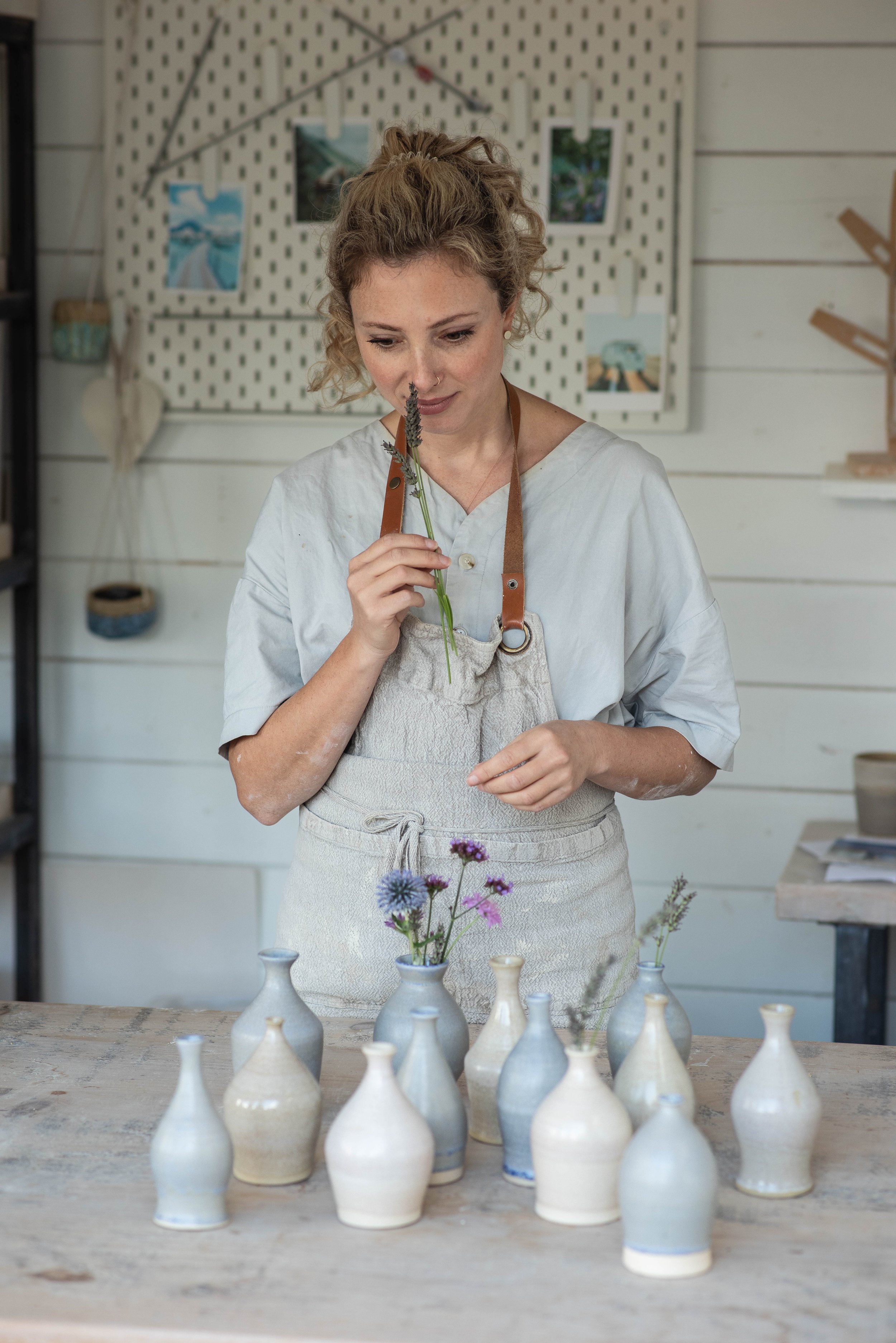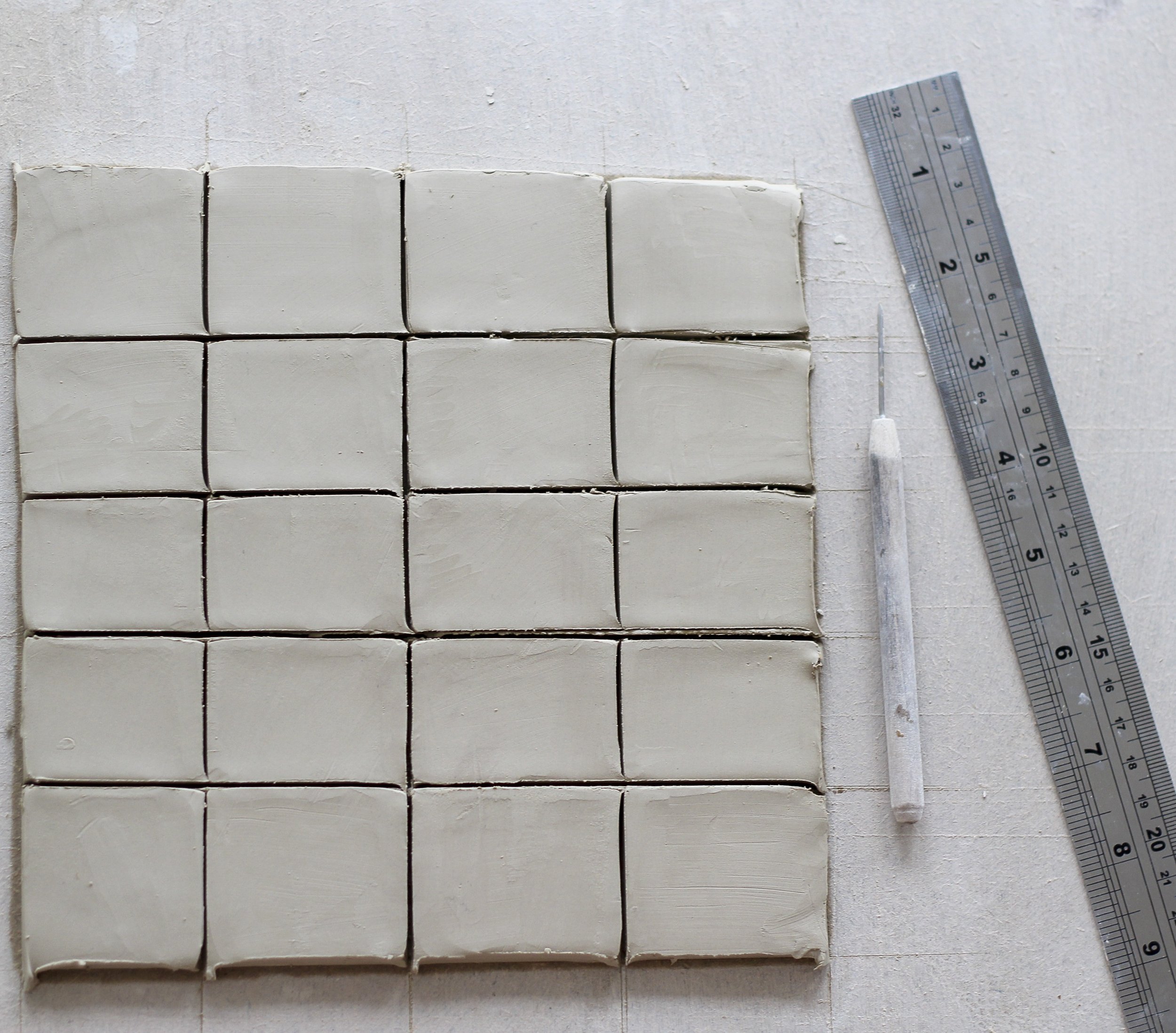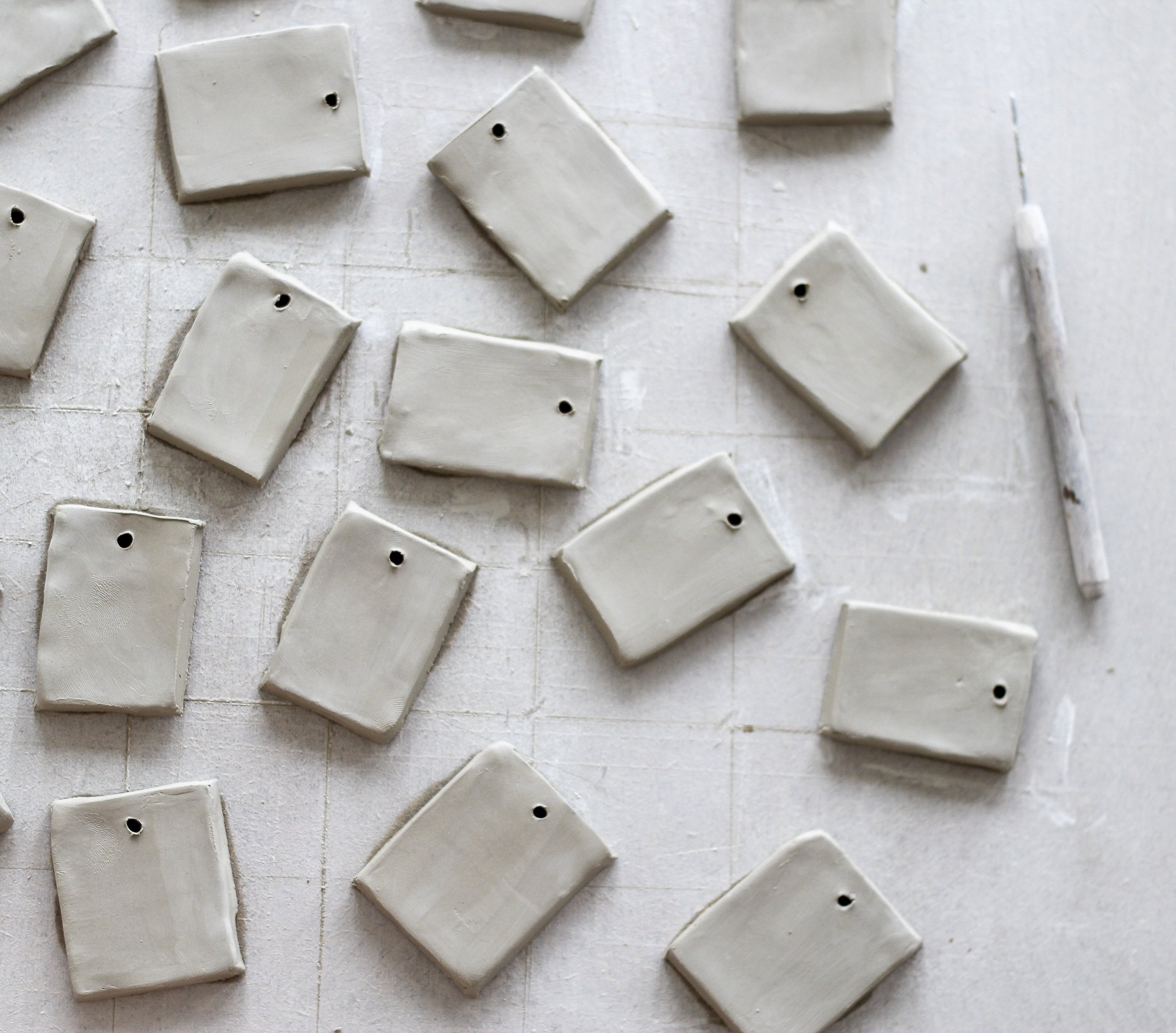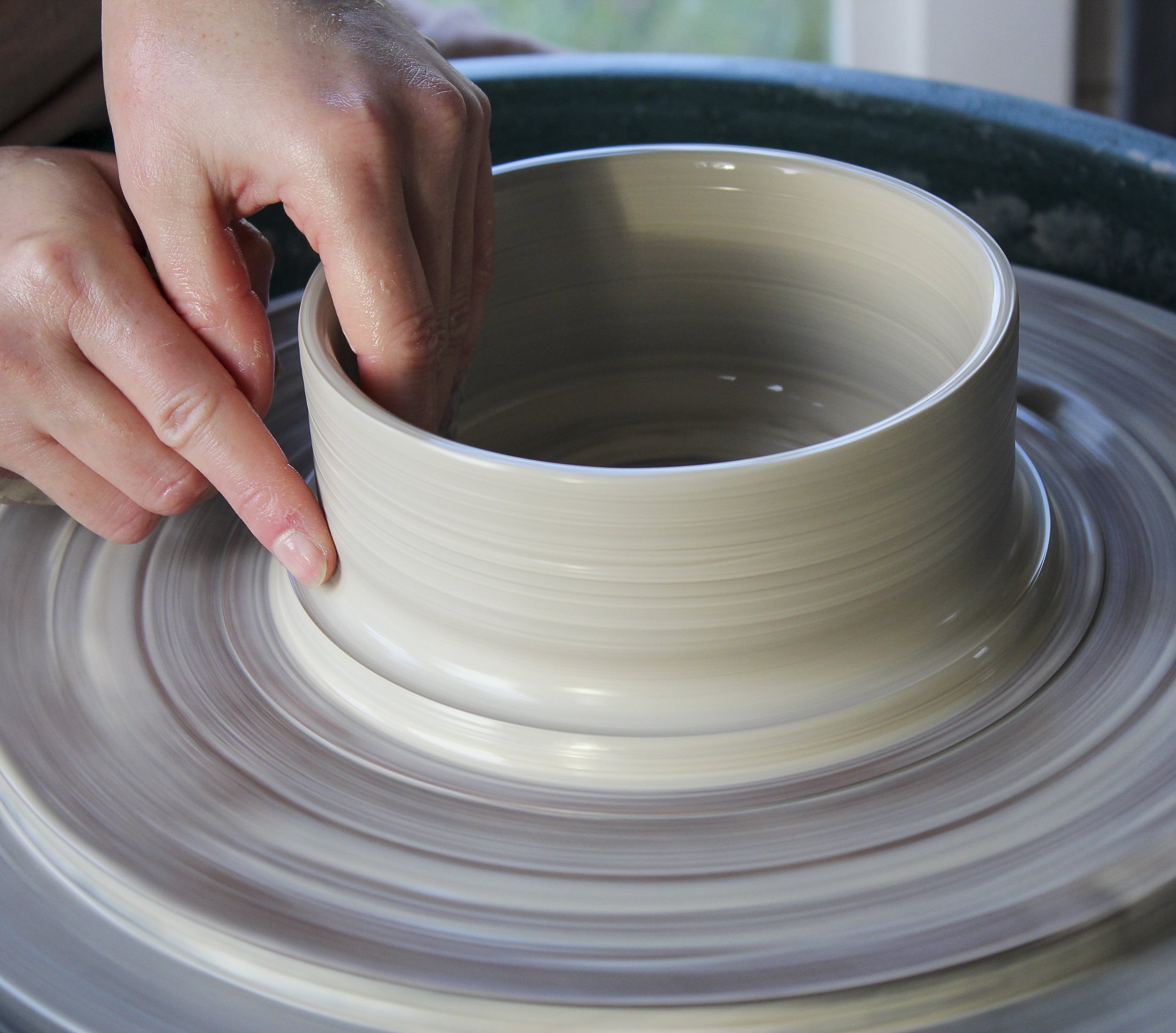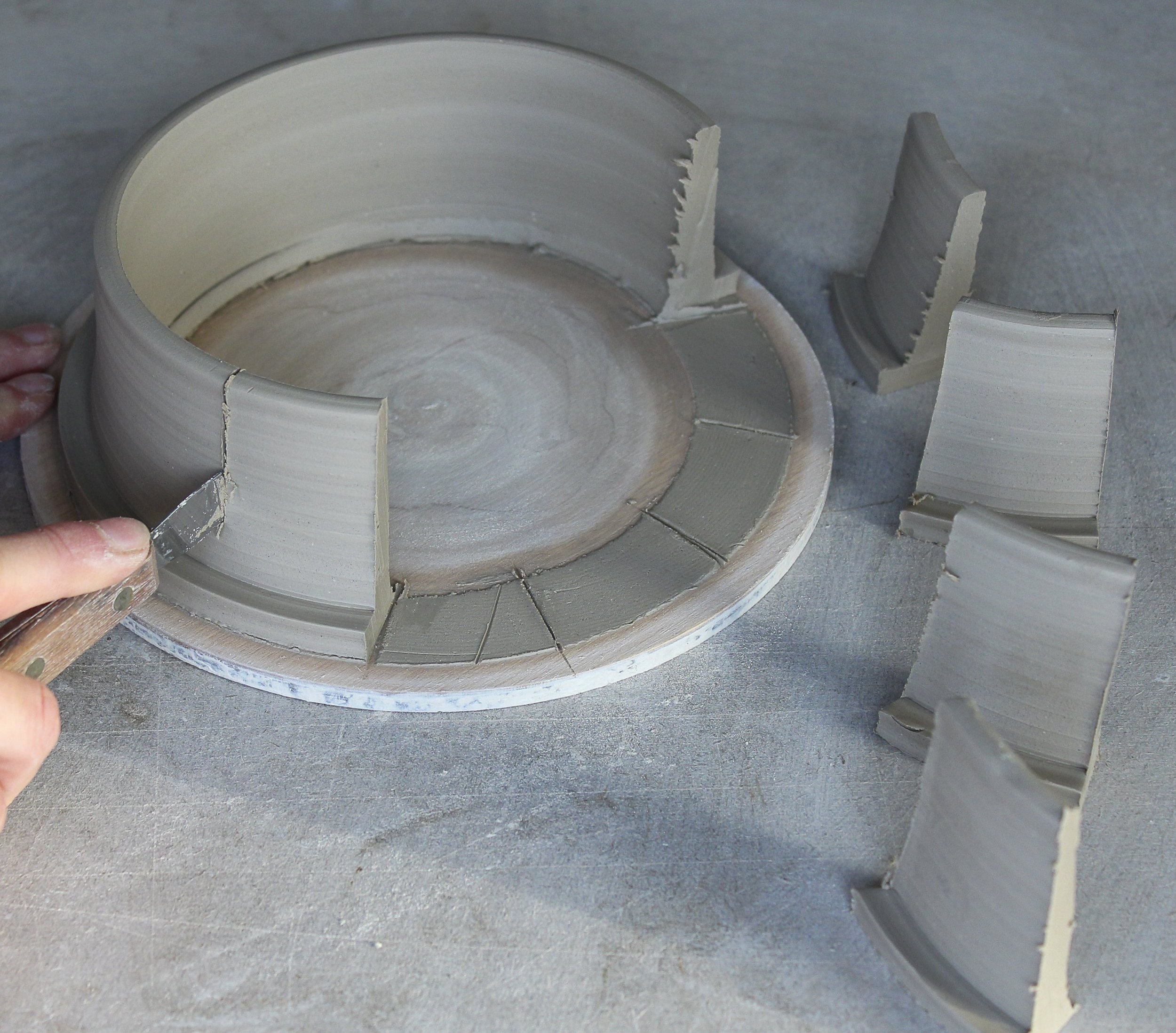My Top Three Tips to Make Your Firings More Successful...
Hey friend,
Are you fed up of opening your kiln to ‘meh’ results? Frustrated by all the things that can go wrong in a firing? If you’re new to pottery or even if you’re a seasoned potter there are some really simple steps to make your firings more successful. These are the top three things I talk about to my students and Pottery Club members ALL THE TIME. Many problems come down to not doing one of these three things. All three are hugely important, but make sure you keep reading to tip number 3 because that one is kicker (IMHO😉)!
Test your glazes….
Sounds blindingly obvious I know! but the impatient part of me always says ‘ oh it will be ok - I’m sure it will work fine...’ Flip to 36 hours later and I’m looking at a muddy brown mess on my kiln shelfs and that lovely little vase I was so proud of looks like (for want of a better word)…a turd. Trust me on the testing....
I make test tiles in a few different ways - one method is just cutting little rectangles of clay tiles- embossing in a pattern so I can see how the glaze reacts to texture. I scratch the name of the glaze into the back, or write it on using an underglaze pencil. I’ll finally add a hole in the top for hanging. This type of test tile are great for brush on glazes.
Second method: I throw a largish bowl shape on the wheel without a bottom, so I just have walls- slightly fatter at the bottom and thinner at the top. I push my finger or a wooden rib 1/4 inch above the batt and into the clay, this creates a little lip which helps to catch any stray glaze drips. I wait for the shape to get leather hard then using a wire I cut it off the wheel head and into sections like hours on a clock face - each of the segments will be a test tile.
Because they stand up on little chubby bases these little flattened pawn shapes are great for testing how glazes behave on a vertical surface such as a mug, a vase or a bowl.
2. Use Cones (pyrometric cones)
When I first started pottery nearly 17 years ago I couldn’t believe that cones were the only accurate way to measure the temperature a kiln reaches during a firing. ‘You mean I have to risk singeing my eyebrows, peering through this tiny hole to see if that equally tiny piece of ceramic has bent?’ I rarely look into the depths of a white hot kiln nowadays - it’s not worth the cataracts - but I do put cones in every glaze firing and study them when they emerge…and here’s why you should too…
Cone 6, Cone pack.
Turns out cones are as sophisticated as it gets in pottery technology. Cones have been around since 1886. They have been meticulously formulated to melt and bend at specific melting points, accurate to within 5 degrees centigrade.
A modern thermocouple or pyrometer can only measure the temperature of the air in your kiln, a cone will measure the amount of heat energy transferred into the ceramic material itself and that’s what we as potters are interested in. A sensor in a thermocouple will also degrade over time and become less and less accurate. Cones really are the only way to check your headwork is accurate.
How do you know if your work has fully vitrified? And if your glazes are matured and your mugs are not going to leak? CONES. Cones are the only way to tell if your pottery and glazes absorbed the correct amount of heat work needed to fully vitrify.
I always put a cone pack on every shelf, in every single one of my glaze firings. This will ensure I understand the effect of the heat work on all my pottery, it will tell me if I have cool spots or hot spots in my kiln.
If you don’t quite understand cones and how to use them, I’ve got you covered, keep reading…
Several cone packs after their firings. Cone turn white after the firing so that even if they haven't bent you know you've used them.
3. Record your results…
Tip one and tip two are superfluous unless you do tip three…
Keeping a firing notebook is crucial. Here’s why…
It might be several weeks or even months between firings. Even as a full-time potter I often go six weeks between glaze firings and I can't remember the things I did yesterday let alone the things I did six weeks ago! So no matter if you think you can remember what you did with your firing schedules, with your glazes, where you put the work in the kiln, how heavily the kiln was loaded etc, etc… I can guarantee you're going to forget something at some point if you don't write it down!
There are so many different combinations and variables that you need to think about when firing your work; what glazes you used, the application, were you happy with the results, did you have any issues, as well as schedule and temperature. A good pottery notebook is extremely useful for beginners as well as those who like to experiment with new glazes, glaze combos and folks getting a new kiln or kiln for the first time. Even if you are a seasoned pro, keeping a good pottery note book allows you to keep on top of your glaze recipes, how many firings your kiln has done, the amount of energy each firing used (which has cost implications if you sell your work) and when your elements are likely to need changing.
If you're firing your work in a community studio it's still really important to keep a record of what happened in each firing. If you don’t fire your work yourself ask the technician or the person who does for the details of the schedule; what part of the kiln was the work sat on (bottom, middle or top) and what cone was reached.
I my pottery notebook next to my kilns in my studio so I can easily write down the notes right away when I'm unpacking and it's fresh in my mind.
Just some of the things you might want to record…
What cones were achieved
How long the firing took
Were you happy with the results
Did you have any issues? e.g. was there pinholing? did you get any running? were the colours as you expected?
Energy usage*
*On some kiln controllers it tells you how much energy was used for that firing (the instructions on how to set this up will be in the kiln manual) Not only is this a great way of keeping track of your costs, it’s also a really good indication of the health of your elements. Don’t get caught out needing to change your elements 3 days before that important craft fair!
One of the most important things that you're going to put in your kiln notebook is recommendations for yourself next time. Any small changes can have a really big impact, for example: if your glazes ran maybe you need to eliminate the soak and/ or reducing the top temperature. If you don't write stuff down when it's fresh in your mind it's very unlikely you're going to remember when it comes to firing those same glazes the next time. Here’s the best bit…
I’ve made recording your firngs super easy for you…
The Essential Pottery Notebook - publishing date January 2025
I’ve been keeping notes since I first got my kiln but until recently my kiln notebooks were a little messy. I don't have the greatest handwriting and my notes were a little disorganised. I wanted to make it easier for myself and you. Despite searching, and it being something my fellow potters and I desperately needed, I couldn't find a good pottery notebook on the market - so, I decided to make my own…
The Essential Pottery Notebook ensures that you remember what you did when you got a good firing. And just as importantly - what you did when you got a bad one! With the ever increasing cost of electricity and gas the more we can do to make our firings successful and more efficient the better for our bottom line and for the planet.
Helping you get more consistent results and to feel more confident and in control of your making. This notebook clearly tells you what you need to record after every firing in a logical and methodical way. Your notes will always be legible, understandable and referenceable. I have included a firing glossary of all the key firing terms and what they mean, a clear easy to understand breakdown of how to use cones, how to read cones, cone charts PLUS space to draw your pottery designs and record your favourite glaze recipes and combinations AND loads more…
The Essential Pottery Notebook has been checked and endorsed by The Edward Orton Jr. Foundation - the people who make cones! Pre-order your copy now. (Future you will thank you!)
And what’s more, I am offering a FREE kilns and firing workshop for everyone who pre-orders a copy. Simply send me a screen-shot of your pre-order confirmation to karaleighsbook@gmail.com
The workshop will be held live after publication date when you have the book in your hands. You’ll get a confirmation email to let you know your place is secure.
I put a lot of thought and effort into making The Essential Pottery Notebook one of your go-to pottery tools. I’d love to know what you think. Happy Potting!
Kara x
Full Disclosure: I originally wrote this blog post three years ago when I first released the digital edition of The Essential Kiln Notebook, to support publishing of the actual IRL printed Essential Pottery Notebook I gave it an upgrade.

